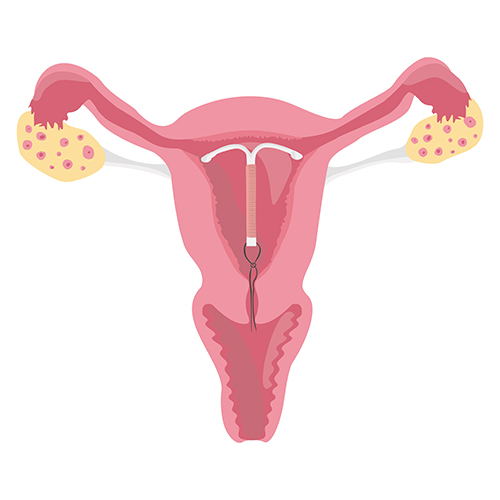A very important consideration when deciding on treatment options is a woman’s plans for fertility. If pregnancy is a priority, treatments that remove the womb (hysterectomy) or that block the release of an egg are obviously inappropriate.
There are a range of treatment options available that need to be targeted to the individual circumstances. Treatment should aim to remove the underlying problem wherever possible. Hence, in cases of submucous fibroids and polyps, it is preferable that they be removed using hysteroscopic surgery.
Treatment options include:
- Mefenamic acid: 500 mg three times daily starting 1-2 days before the onset of bleeding.
- Tranexamic acid: 1 gram three or four times daily for up to 4 days
- Combined oral contraceptive pills: Effective in regularising periods. Unsuitable for use in smokers due to increased risk of clot formation.
- Progesterone: Use from Day 5 to Day 26 of cycle. Shorter duration of progesterone usage has not been found to be effective.
- Mirena IUS: This is a progesterone-releasing IUD that is extremely effective in treating heavy menstrual bleeding. It lasts for 5 years after insertion and is also a highly effective form of contraception. It is less effective when the womb cavity is distorted by fibroids.

- Ulipristal acetate (Esmya): Used in cases of uterine fibroids at 5 mg daily from the start of the period for up to 3 months. Caution with use due to recent concerns regarding rare cases of severe liver damage.
- GnRH analogues: These create a temporary menopause by blocking the production of the hormones, FSH and LH. This then blocks oestrogen production causing the lining to become very thin. These drugs can only be used for a few months as the loss of oestrogen may cause thinning of the bones. GnRH analogues are often used to shrink fibroids prior to surgery. See my section on The Menstrual Cycle and Ovulation Tracking for more information.
- Uterine artery embolization (UAE): Caution is advised in women planning pregnancy. Prof Homer’s research found an increased risk of miscarriage after UAE. See my section on Uterine Fibroids for more information.
- Ablation of the womb lining: Using devices such as NovaSure and Thermal Balloons.
- Hysteroscopic surgery to remove the lining of the womb. This is known as Trans-Cervical Resection of the Endometrium (TCRE)
- Hysteroscopic surgery to remove submucous fibroids. This is known as Trans-Cervical Resection of Fibroids (TCRF)
- Hysteroscopic surgery to remove polyps. This is known as Trans-Cervical Resection of Polyps (TCRP)
- Laparoscopic surgery to remove fibroids that may be predominantly located within the muscle layer of the womb (intramural fibroids).
- Hysterectomy: May be performed via laparoscopic surgery in some cases.
